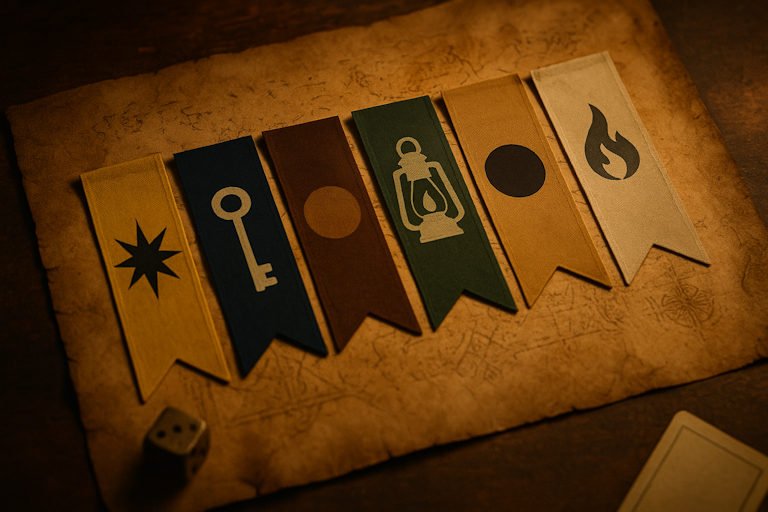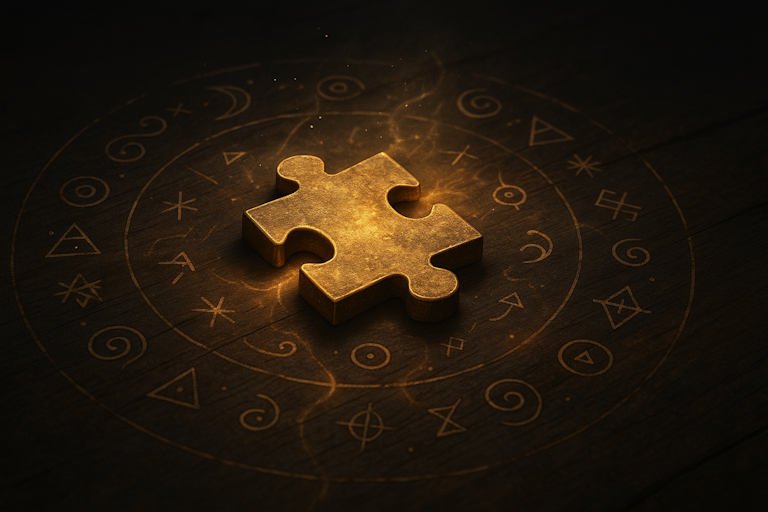
Building suspense in games without blood or gore: the art of subtle tension (2025)
Suspense does not need blood, gore, or violence to grip an audience. In fact, some of the most unforgettable moments in play come from silence, shadows, and the feeling that something is about to happen. Building suspense in games without those graphic elements requires a different craft — one rooted in subtlety and imagination.
Instead of shocking players with fear, you can draw them in with mystery. A closed door, a hidden clue, or an unexpected pause at the table can make the air thicken with anticipation. These small, deliberate touches allow players to project their own emotions onto the game, turning uncertainty into excitement. The tension lives in the space between what is known and what is still concealed.
In this article, we explore how to design and enjoy games that rely on atmosphere rather than gore. We’ll look at the psychology of subtle tension, highlight practical techniques for creating suspense, and discuss how to balance intensity so that it thrills without overwhelming. In the world of play, sometimes the quietest moments are the ones that echo the loudest.
Building suspense in games without blood or gore
Building suspense in games begins not with shock, but with expectation. Players lean forward when they sense that something is coming, even if they don’t yet know what. This anticipation is what transforms an ordinary round of play into an extraordinary experience. By removing gore and violence, the focus shifts to more subtle elements — light, silence, timing, and the weight of hidden information.
The strength of non-violent suspense lies in its universality. Not every group wants to play a horror scenario filled with fear and gore, but everyone understands the feeling of waiting for a reveal. A single card turned face up, a sealed envelope about to be opened, or a pause before a critical decision — these small acts create disproportionate tension. They work because they leave room for imagination, allowing each player to fill the silence with their own expectations and fears.
Designers who aim to master this craft often rely on pacing. Suspense thrives on contrast: long stretches of calm followed by sudden disruption. In group games, this might look like several rounds of predictable moves interrupted by a rule change, or a secret role revealed at just the right time. The key is to stretch the moment without breaking it, keeping players hooked while never letting them feel stalled. When timed correctly, the payoff lands with even greater impact because the buildup has primed everyone for release.
Another core element is uncertainty. Building suspense in games means ensuring players can never be entirely certain of what comes next. Mystery cards, hidden roles, concealed objects, or evolving storylines all serve this purpose. Crucially, the uncertainty must feel fair and integrated into the game’s design — if players sense it’s arbitrary, the tension collapses into frustration. But when handled with care, uncertainty turns every move into a gamble, every silence into a question, and every reveal into a story worth retelling.
Non-violent suspense proves that you don’t need blood to raise heartbeats. You only need atmosphere, imagination, and the courage to let players sit with the unknown.

Uncover
The Firefly Inn
Behind its lantern light, secrets wait to be revealed. Step closer, and choose your path into the unknown.
The psychology of subtle tension
Suspense is one of the oldest tools in human storytelling. Long before games existed, people gathered around fires to share tales that kept listeners on edge. What made those stories gripping was not gore or shock, but the careful use of anticipation. The same principle applies at the table: subtle tension works because the human brain is wired to respond to the unknown.
Psychologists note that suspense thrives on a gap between knowledge and resolution. When players know that something is hidden but do not know exactly what, curiosity ignites. This gap demands attention. Brains race to predict outcomes, filling silence with possibilities. The result is heightened focus: every glance at the cards, every sound of dice, every pause in speech feels charged with meaning. Suspense doesn’t overwhelm players with answers; it feeds on the questions left hanging in the air.
In group games, this effect intensifies because it is shared. Anticipation ripples across the table, amplified by body language and reactions. A nervous laugh, a raised eyebrow, or the sound of someone holding their breath — all of these social cues reinforce the sense that something is about to happen. Suspense becomes contagious, pulling everyone into the same emotional current.
Importantly, subtle tension differs from fear. Where fear narrows focus and provokes defensive behavior, suspense opens possibilities. It keeps players engaged, leaning forward, eager for the reveal. This is why even non-horror games can benefit from suspense: it elevates engagement without alienating those who dislike frightening content.
Another psychological key lies in pacing. A constant barrage of surprises numbs players, while too much calm lulls them into boredom. Effective suspense alternates between stillness and disruption, stretching time in order to sharpen the impact of a twist. The brain adapts to patterns, so breaking them at the right moment creates the strongest effect.
Ultimately, the psychology of subtle tension is about trust. Players must believe the suspense leads somewhere meaningful. If they sense manipulation or randomness, the effect collapses. But when the tension is woven naturally into the game’s design, it becomes a powerful emotional driver — one that transforms simple mechanics into unforgettable experiences.

Uncover
The Firefly Inn
Behind its lantern light, secrets wait to be revealed. Step closer, and choose your path into the unknown.
Effective non-violent techniques for building suspense in games
Building suspense in games without gore relies on subtle design choices. Below are proven techniques that heighten anticipation and tension while keeping the experience safe, playful, and engaging.
- Controlled information flow: Reveal only part of the picture and hold back the rest. Players lean forward when they sense that hidden details will eventually matter.
- Environmental cues: Lighting, sound, or even a single symbolic object can shift the atmosphere instantly. A flickering candle or a sealed envelope suggests that something is about to change.
- Strategic pauses: Silence can be louder than noise. A deliberate pause before a reveal gives players space to imagine, and their own minds create the tension.
- Red herrings and misdirection: Lead players to expect one outcome, then subvert it. The discovery that they were watching the wrong clue is often more thrilling than the real reveal itself.
- Escalating stakes: Make each round or decision feel weightier than the last. Suspense grows when players sense that the next choice carries more risk than the previous one.
- Unexpected timing: Break patterns. Introduce an event a moment earlier or later than players expect. This unpredictability creates nervous laughter and keeps everyone alert.
- Symbolic reveals: A hidden card, a symbol drawn at the right moment, or a small twist in narrative turns ordinary play into something memorable. It doesn’t require horror — just imagination.

Together, these techniques show that suspense is about rhythm, mystery, and psychology. By layering subtle signals and timing, a game can generate tension as sharp as any thriller — without spilling a single drop of blood.
Balancing tension and play
Suspense is only effective when it enhances the game rather than overwhelms it. Building suspense in games requires a careful balance: too much tension can exhaust players, while too little leaves the experience flat. The goal is to create a rhythm that keeps everyone alert without making the session stressful or confusing.
One way to achieve this balance is through pacing. Games that alternate between calm and tension give players time to breathe before pulling them back into suspense. Just as a metronome marks beats in music, suspense benefits from rhythm. A quiet round, followed by an unexpected event, then a slower moment again — this back-and-forth makes every reveal feel sharper.
Fairness also matters. Suspense collapses when players believe outcomes are arbitrary or stacked against them. Twists and hidden elements should feel like part of the design, not like tricks. Clues, foreshadowing, or subtle signals help players accept surprises as earned rather than unfair. When the tension resolves in a way that makes sense, it deepens trust in the game itself.
Social dynamics play a role as well. Some players thrive on tension, others grow uncomfortable if it lingers too long. Good design or hosting recognizes these differences, offering layers of suspense that allow everyone to engage at their comfort level. A sealed envelope might thrill one player, while another prefers the steady rhythm of strategy — both can coexist if the game offers multiple ways to feel involved.
Ultimately, building suspense in games means creating experiences that linger in memory. When done well, the tension amplifies joy rather than overshadowing it. The silence before the reveal, the collective gasp when it arrives, and the laughter that follows — these are the moments that transform simple play into unforgettable stories.
Conclusion: Why building suspense in games leaves a lasting mark
Building suspense in games is not about fear or violence, but about crafting moments that stay with players long after the session ends. When tension is woven through rhythm, atmosphere, and timing, it transforms a simple activity into a shared story. People may forget the rules or the final score, but they remember the silence before a reveal, the nervous laughter when an envelope is opened, and the sudden shift that changes everything.
What makes this style of suspense powerful is its accessibility. Everyone understands anticipation, whether or not they enjoy horror. By relying on subtle tools — a flicker of light, a secret held back, or the steady tick of a rhythm — games can build intensity that thrills without alienating. This universality means suspense can enhance any type of play, from mystery-driven storytelling to lighthearted group games.
Crucially, the impact of suspense reaches beyond the table. It strengthens connections between players, because they experience the same moment together: the waiting, the reveal, the collective release of emotion. This shared rhythm is what elevates play into memory.
In the end, building suspense in games is about trust and imagination. Trust that the twist is fair, and imagination that fills the silence with possibility. When those elements align, the result is not just entertainment but a story players will retell — proof that the quietest tools often create the loudest echoes.

Uncover
The Firefly Inn
Behind its lantern light, secrets wait to be revealed. Step closer, and choose your path into the unknown.




